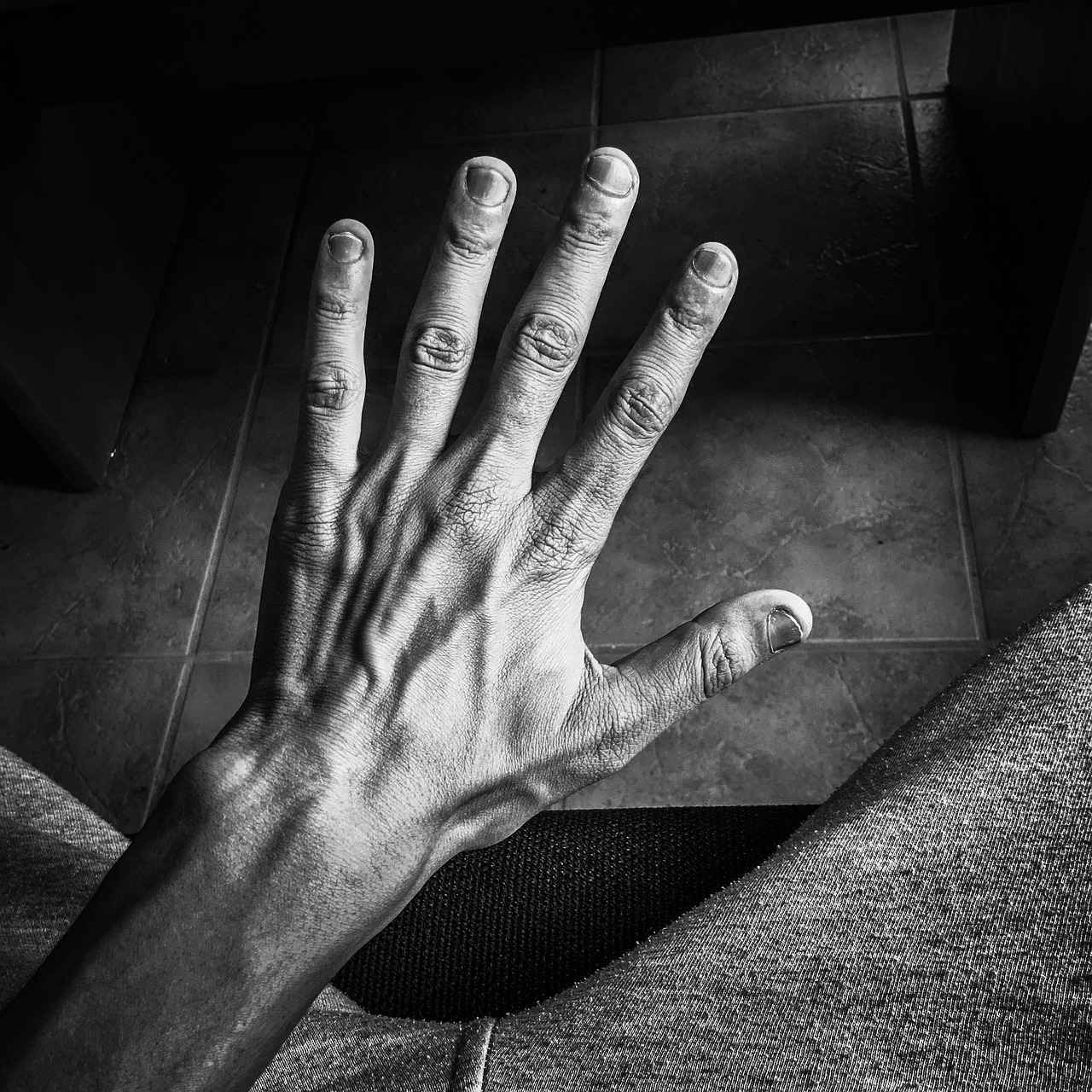This article delves into the intricate healing process of bone grafts, providing insights into recovery times, the various factors that influence healing, and practical tips for ensuring a smooth recovery.
What is a Bone Graft?
Understanding the fundamentals of bone grafts is essential for patients. A bone graft is a surgical procedure designed to replace missing bone tissue. This process not only promotes healing but also facilitates the regeneration of bone in areas that have been compromised due to injury, disease, or surgical procedures.
How Long Does the Healing Process Take?
The duration of the healing process following a bone graft can vary considerably. While initial healing may occur within 6 to 12 weeks, complete recovery can take several months. Factors influencing this timeline include the type of graft used, the patient’s overall health, and the specific site of the graft.
Factors Influencing Healing Time
- Patient’s Age: Younger patients often heal faster than older individuals due to better blood circulation and regenerative capabilities.
- Overall Health: Conditions such as diabetes, obesity, and smoking can significantly impede the healing process.
- Type of Bone Graft: Different graft types—autografts, allografts, and synthetic grafts—have unique healing characteristics that can affect recovery times.
Post-Operative Care Tips
Effective post-operative care is crucial for enhancing recovery. Adhering to your surgeon’s guidelines regarding activity levels, diet, and follow-up appointments is vital. Here are some tips:
- Follow a balanced diet rich in calcium and vitamin D to support bone health.
- Engage in light physical activity as recommended to promote circulation.
- Avoid smoking and limit alcohol consumption to facilitate healing.
Signs of Complications During Healing
Being vigilant about potential complications is essential. Patients should monitor for signs such as:
- Increased pain or swelling
- Persistent fever
- Unusual drainage from the surgical site
If any of these symptoms occur, it is crucial to contact your healthcare provider immediately.
Managing Pain and Discomfort
Effective pain management is a key aspect of recovery. Utilizing prescribed medications and employing non-pharmacological methods, such as ice therapy and elevation of the affected area, can significantly enhance the healing experience.
When to Contact Your Surgeon
Knowing when to reach out to your surgeon can prevent complications. Patients should be proactive about any unusual symptoms during the healing process, including:
- Severe or worsening pain
- Signs of infection
- Any changes in the appearance of the graft site
Long-Term Expectations After a Bone Graft
Understanding long-term expectations can help patients prepare for their recovery journey. Most individuals can expect to return to normal activities within a few months, but this varies based on individual circumstances. Regular follow-up appointments are essential to monitor the healing process and ensure proper integration of the graft.
Physical Activity Limitations
After a bone graft, patients may face restrictions on physical activities. It is crucial to gradually reintroduce exercise to avoid stressing the graft site prematurely. Following the advice of healthcare providers regarding activity limitations can significantly impact the success of the graft.
Follow-Up Care and Monitoring
Regular follow-up appointments are necessary to monitor the healing process. These visits allow healthcare providers to ensure that the graft is integrating properly and to address any concerns that may arise during recovery.

What is a Bone Graft?
Understanding the basics of bone grafts is crucial for patients. A bone graft is a surgical procedure that replaces missing bone to promote healing and regeneration. This process is often necessary in cases where bone loss has occurred due to injury, disease, or surgical removal. By utilizing a bone graft, surgeons aim to restore structural integrity and functionality to the affected area.
Bone grafts can be categorized into several types, each with its own unique properties and applications:
- Autografts: These are harvested from the patient’s own body, typically from areas such as the hip or wrist. Autografts are highly effective because they contain living cells that promote healing.
- Allografts: Sourced from a deceased donor, allografts are processed and sterilized to ensure safety. They are commonly used in situations where larger amounts of bone are needed.
- Synthetic grafts: Made from biocompatible materials, synthetic grafts are designed to mimic the properties of natural bone. They are particularly useful in specific surgical scenarios.
The choice of graft type can significantly influence the healing process and overall recovery time. Factors such as the patient’s age, health status, and the specific location of the graft will also play a critical role in the success of the procedure.
During the initial healing phase, which typically lasts between 6 to 12 weeks, the body begins to integrate the graft material with the existing bone. However, complete recovery may take several months, and patients should be prepared for a gradual return to normal activities.
Post-operative care is vital for a successful recovery. Patients are advised to follow their surgeon’s recommendations closely, which may include:
- Limiting physical activity to avoid stressing the graft site.
- Adhering to a balanced diet rich in nutrients that support bone health, such as calcium and vitamin D.
- Attending all scheduled follow-up appointments to monitor healing progress.
Being aware of potential complications is also essential during the healing process. Signs such as increased pain, swelling, or fever should prompt immediate medical attention. Effective pain management strategies, including prescribed medications and home remedies, can greatly enhance the healing experience.
In summary, a bone graft is a critical procedure for restoring bone integrity and function. Understanding the different types of grafts, the expected healing timeline, and the importance of post-operative care can empower patients to take an active role in their recovery journey.

How Long Does the Healing Process Take?
The healing process for a bone graft is a critical aspect of recovery that many patients are eager to understand. Knowing the timeline can help set realistic expectations and prepare for the journey ahead. In this section, we will delve into the healing duration, factors that influence recovery, and essential tips for a smoother healing experience.
The healing time for a bone graft can vary significantly among individuals. Typically, initial healing occurs within 6 to 12 weeks, but complete recovery may take several months. This period involves the gradual integration of the graft into the existing bone structure, which is crucial for long-term success.
During the first few weeks post-surgery, patients may experience discomfort and swelling, which are normal parts of the healing process. It is essential to follow your surgeon’s post-operative care instructions to manage these symptoms effectively.
Several factors can affect healing time, including:
- Patient’s Age: Younger patients typically heal faster due to better regenerative capabilities.
- Overall Health: Conditions such as diabetes or autoimmune diseases can slow healing.
- Type of Graft Used: Autografts (bone from the patient’s body) often heal faster than allografts (donor bone) or synthetic grafts.
A patient’s overall health plays a vital role in the healing process. Factors like smoking and poor nutrition can impede recovery. It is crucial to manage these factors before and after surgery to promote optimal healing. Engaging in a balanced diet rich in vitamins and minerals can significantly support bone health.
Understanding the type of bone graft used during surgery is essential, as different grafts have unique healing characteristics:
- Autografts: Tend to integrate quickly since they are sourced from the patient’s body.
- Allografts: May take longer to heal as they require the body to accept foreign tissue.
- Synthetic Grafts: Healing times can vary based on the material used and the body’s response.
Effective post-operative care can enhance healing. Here are some tips to aid recovery:
- Follow Activity Guidelines: Adhere to your surgeon’s recommendations regarding physical activity.
- Manage Pain: Utilize prescribed pain management techniques to stay comfortable.
- Attend Follow-Up Appointments: Regular check-ups are essential to monitor your healing progress.
Being aware of potential complications is crucial. Signs such as increased pain, swelling, or fever may indicate issues that require immediate medical attention. If you experience any unusual symptoms, do not hesitate to contact your healthcare provider.
Pain management is a critical aspect of recovery. Understanding how to manage discomfort effectively can significantly improve the healing experience for patients. This includes taking prescribed medications as directed and employing ice packs or other methods to alleviate swelling.
Knowing when to reach out to your healthcare provider can prevent complications. Patients should be vigilant about any unusual symptoms during the healing process. If you notice worsening symptoms or new issues, it’s essential to consult your surgeon promptly.
Understanding what to expect in the long run can help patients prepare for their recovery journey. Most patients can return to normal activities within a few months, depending on individual circumstances. However, it’s important to gradually reintroduce physical activities to avoid stressing the graft site prematurely.
Regular follow-up appointments are necessary to monitor the healing process. These visits allow healthcare providers to ensure that the graft is integrating properly and to address any concerns. Keeping an open line of communication with your healthcare team is vital for a successful recovery.
Factors Influencing Healing Time
When it comes to the healing process of bone grafts, several key factors can significantly influence how quickly and effectively the graft heals. Understanding these factors is crucial for patients who are undergoing this procedure, as they can help set realistic expectations for recovery.
The healing time for a bone graft can vary widely based on multiple elements. Here are some of the most significant factors:
- Patient’s Age: Age plays a pivotal role in the healing process. Younger patients typically experience faster healing due to better circulation and cellular regeneration. Conversely, older patients may face longer recovery times due to slower metabolic rates and decreased bone density.
- Overall Health: A patient’s general health condition can greatly impact healing. Chronic illnesses such as diabetes or osteoporosis can hinder the body’s natural healing processes. Additionally, factors like obesity can increase the risk of complications, further delaying recovery.
- Type of Graft Used: The type of bone graft used during surgery also affects recovery time. Autografts, which utilize the patient’s own bone, generally heal faster than allografts or synthetic grafts, which may require more time for integration into the body.
Your lifestyle choices can either enhance or impede the healing process. Here are some lifestyle factors to consider:
- Smoking: Smoking is known to impair blood flow and decrease oxygen levels in the body, which can significantly slow down the healing of bone grafts. Quitting smoking before and after surgery is highly recommended.
- Nutrition: A well-balanced diet rich in vitamins and minerals, particularly calcium and vitamin D, is essential for bone healing. Patients should focus on consuming foods that promote bone health.
- Physical Activity: While rest is important post-surgery, engaging in light, doctor-approved physical activity can help stimulate blood flow and promote healing. However, it is crucial to avoid high-impact activities that may stress the graft site.
Being vigilant about potential complications is vital for a smooth recovery. Patients should be aware of signs that may indicate issues, such as:
- Increased pain or swelling at the graft site
- Fever or chills
- Unusual discharge from the surgical site
If any of these symptoms occur, it is crucial to contact a healthcare provider immediately for further evaluation.
Effective pain management is an essential part of the recovery process. Patients should discuss pain relief options with their surgeon, which may include medications or alternative therapies. Proper pain management can significantly improve the overall healing experience.
Regular follow-up appointments with the surgeon are necessary to monitor the healing process. These visits allow healthcare providers to assess the graft’s integration and address any concerns that may arise during recovery. Adhering to post-operative care instructions is crucial for a successful outcome.
In summary, understanding the various factors that influence bone graft healing time can empower patients to take proactive steps in their recovery journey. By managing health conditions, making positive lifestyle choices, and staying vigilant for complications, patients can enhance their chances of a successful and timely recovery.
Patient Health and Lifestyle
are critical components that significantly influence the recovery process following a bone graft procedure. A patient’s overall health status can either facilitate or hinder the healing process, making it essential to consider various health factors before and after surgery.
The body’s ability to heal is closely linked to its overall health. Conditions such as diabetes, obesity, and smoking can create complications that impede the healing of bone grafts. For instance, diabetes can lead to poor circulation and delayed wound healing, which can prolong recovery times.
Smoking has a detrimental impact on the healing process. Nicotine restricts blood flow, which is vital for delivering nutrients and oxygen to the surgical site. This can result in slower healing, increased pain, and a higher risk of complications. Therefore, it is highly recommended that patients quit smoking at least a few weeks before and after surgery.
Nutrition plays a pivotal role in recovery. A balanced diet rich in vitamins and minerals can enhance the body’s healing capabilities. Nutrients such as calcium, vitamin D, and protein are particularly important for bone health. Patients should focus on consuming foods like leafy greens, dairy products, lean meats, and nuts to support their recovery.
For patients with chronic conditions such as hypertension or cardiovascular diseases, it is crucial to manage these issues effectively before undergoing surgery. Uncontrolled conditions can lead to complications during and after the procedure, potentially affecting the success of the bone graft.
After a bone graft, physical activity should be approached with caution. Patients are often advised to limit their physical activities to avoid stressing the graft site. Gradual reintroduction of exercise, as guided by a healthcare professional, can promote healing while minimizing the risk of complications.
The psychological state of a patient can also impact recovery. Stress and anxiety can hinder the body’s healing processes. Engaging in relaxation techniques such as meditation, yoga, or counseling can help improve mental health and, in turn, support physical recovery.
- Consult with your healthcare provider about any pre-existing conditions.
- Develop a comprehensive plan for managing chronic conditions.
- Adopt a nutritious diet to support bone health.
- Consider quitting smoking and limiting alcohol consumption.
- Engage in stress-reducing activities.
After surgery, patients should continue to prioritize their health by following a balanced diet, staying hydrated, and adhering to prescribed medications. Regular follow-up appointments will allow healthcare providers to monitor progress and make necessary adjustments to the recovery plan.
In summary, a patient’s health status and lifestyle choices are integral to the success of bone graft recovery. By addressing health conditions, adopting a nutritious diet, and making necessary lifestyle changes, patients can significantly enhance their healing process and achieve better outcomes.
Type of Bone Graft Used
When it comes to bone grafting, the choice of graft type is pivotal. Each type of bone graft—be it an autograft, allograft, or synthetic graft—has its own set of characteristics that can significantly influence the recovery time and overall healing process.
An autograft involves harvesting bone from the patient’s own body, commonly from areas like the hip or leg. This type of graft is often considered the “gold standard” due to its high compatibility and minimal risk of rejection. The healing characteristics of autografts typically lead to faster recovery times, often within 6 to 12 weeks for initial healing. However, the donor site may also require time to heal, which can add to the overall recovery period.
Allografts are sourced from human donors, usually through a tissue bank. While they eliminate the need for a second surgical site, the healing time can be longer compared to autografts, primarily due to the body needing to integrate the foreign tissue. Generally, allografts may take 3 to 6 months for complete healing, depending on the patient’s individual response and the specific site of the graft.
Synthetic grafts, made from materials like calcium phosphate or hydroxyapatite, are designed to mimic natural bone. These grafts are often used when there is insufficient donor bone available or when a patient prefers to avoid additional surgery. The healing time for synthetic grafts can vary widely, often taking several months for the material to be fully integrated into the body. However, advancements in technology are continually improving the healing characteristics of these grafts.
- Patient’s Age: Younger patients tend to heal faster.
- Overall Health: Pre-existing conditions can slow recovery.
- Type of Graft: As discussed, each graft type has unique healing properties.
- Post-Operative Care: Following care instructions can significantly impact recovery.
In summary, the plays a crucial role in determining recovery times. Autografts generally offer the quickest healing, while allografts and synthetic options may require more time for integration. Understanding these differences can help patients set realistic expectations for their recovery journey.
It is essential for patients to consult with their healthcare provider to choose the best type of graft for their specific needs, as this decision can greatly influence not only recovery time but also long-term outcomes.
Post-Operative Care Tips
Post-operative care is a critical aspect of recovery after any surgical procedure, including bone grafts. Proper care can significantly enhance the healing process, making it essential for patients to adhere to guidelines provided by their healthcare team. This article provides valuable insights into effective post-operative care tips that can lead to a smoother recovery.
Effective post-operative care can enhance healing. Following your surgeon’s recommendations regarding activity levels, diet, and follow-up appointments is crucial for a successful recovery. Neglecting these guidelines may lead to complications, prolonging the healing process.
After surgery, it’s vital to manage your activity levels. Initially, patients should engage in light activities as prescribed. Gradually increasing activity is important to avoid stressing the graft site. Always consult your surgeon before resuming normal activities or exercise routines.
A well-balanced diet plays a significant role in recovery. Focus on consuming nutrient-rich foods that promote healing, such as:
- Lean proteins: Essential for tissue repair.
- Fruits and vegetables: Rich in vitamins and antioxidants that boost the immune system.
- Calcium and Vitamin D: Important for bone health.
Staying hydrated is equally important, as it aids in overall bodily functions and can help reduce swelling.
Regular follow-up appointments with your surgeon are crucial for monitoring the healing process. These visits allow healthcare providers to:
- Assess the integration of the graft.
- Address any concerns or complications.
- Make necessary adjustments to your post-operative care plan.
Being vigilant about potential complications can prevent further issues. Patients should be aware of signs such as:
- Increased pain: More than expected post-surgery.
- Swelling or redness: Around the surgical site.
- Fever: Indicating possible infection.
If any of these symptoms occur, it is essential to contact your healthcare provider immediately.
Managing pain effectively is a vital part of recovery. Patients should discuss pain management options with their healthcare provider, which may include:
- Medications: Prescribed pain relievers or over-the-counter options.
- Ice therapy: To reduce swelling and discomfort.
- Relaxation techniques: Such as deep breathing or meditation.
Recovery can be a challenging time emotionally. Seeking support from friends, family, or support groups can be beneficial. Engaging in activities that promote mental well-being, such as reading or light hobbies, can also aid in recovery.
In summary, effective post-operative care is essential for a successful recovery after a bone graft. By managing activity levels, maintaining a nutritious diet, attending follow-up appointments, and being vigilant about signs of complications, patients can significantly enhance their healing process. Always adhere to your surgeon’s recommendations and communicate openly about your recovery journey.

Signs of Complications During Healing
Understanding the healing process after a bone graft is essential for ensuring a smooth recovery. One critical aspect of this process is being vigilant about potential complications that may arise. Recognizing warning signs early can make all the difference in successfully managing your recovery and avoiding more severe issues.
During the healing process, patients should be particularly aware of increased pain, swelling, or fever. These symptoms can indicate complications that require immediate medical attention. Below are some key signs to monitor:
- Increased Pain: While some discomfort is expected after surgery, a sudden increase in pain may signal an issue. If pain persists or worsens despite following pain management strategies, it’s crucial to consult your surgeon.
- Swelling: Mild swelling is normal, but if swelling becomes pronounced or is accompanied by redness, it could indicate an infection or other complications.
- Fever: A fever over 100.4°F (38°C) can be a sign of infection. If you experience this, seek medical advice promptly.
- Discharge: Any unusual discharge from the surgical site, especially if it is foul-smelling or contains pus, should be reported to your healthcare provider.
- Changes in Sensation: Numbness or tingling in the area surrounding the graft site may suggest nerve involvement and should be evaluated.
Early detection of complications can significantly impact recovery outcomes. Addressing issues promptly allows for timely interventions, which can prevent further complications such as graft failure or prolonged recovery times. For instance, if an infection is caught early, it may be manageable with antibiotics rather than requiring more invasive procedures.
If you observe any of the symptoms mentioned above, contact your surgeon immediately. They may recommend an examination or additional tests to determine the cause of your symptoms. It’s essential to follow their advice closely, as they are best equipped to guide you through the recovery process.
Effective pain management is crucial during your recovery. Following your surgeon’s prescribed pain management plan can help mitigate discomfort and improve your overall healing experience. Use ice packs, prescribed medications, and rest to manage pain effectively.
While some discomfort is to be expected post-surgery, knowing when to seek help is vital. If you experience severe symptoms such as uncontrollable pain, excessive swelling, or a high fever, do not hesitate to seek immediate medical attention. Your health and safety should always come first.
In conclusion, being aware of the signs of complications during the healing process of a bone graft is crucial for a successful recovery. By monitoring your symptoms and seeking timely medical advice, you can help ensure a smoother healing journey.
Managing Pain and Discomfort
Pain management is an essential component of the recovery process, especially following surgical procedures like bone grafts. Understanding how to manage pain effectively can significantly enhance the healing experience for patients, allowing them to focus on recovery rather than discomfort.
Effective pain management is crucial for several reasons:
- Improved Mobility: Reducing pain can enable patients to engage in physical therapy and rehabilitation exercises sooner, which are vital for recovery.
- Enhanced Emotional Well-being: Chronic pain can lead to feelings of anxiety and depression. Managing pain effectively can improve a patient’s mental health.
- Better Sleep Quality: Pain can disrupt sleep patterns. Effective management can lead to improved rest, which is essential for healing.
There are various methods available for managing pain effectively:
- Medications: Over-the-counter pain relievers like ibuprofen or acetaminophen can be beneficial. In some cases, doctors may prescribe stronger pain medications.
- Physical Therapy: Engaging in physical therapy can help alleviate pain through targeted exercises and stretches designed to strengthen the affected area.
- Alternative Therapies: Techniques such as acupuncture, massage, and mindfulness can provide additional pain relief and improve overall well-being.
Patients can take several steps to manage pain effectively in their own homes:
- Follow Medical Advice: Adhering to the pain management plan provided by healthcare professionals is crucial. This includes taking medications as prescribed and attending follow-up appointments.
- Rest and Recovery: Allowing adequate time for rest is essential. Avoiding strenuous activities can prevent exacerbation of pain.
- Cold and Heat Therapy: Applying ice packs can reduce swelling and numb the area, while heat pads can soothe stiff muscles and improve blood circulation.
While some discomfort is normal during recovery, there are specific signs that indicate a need for medical attention:
- Increased Pain: If pain worsens significantly or does not respond to prescribed medications, patients should contact their healthcare provider.
- Signs of Infection: Symptoms such as fever, chills, or unusual swelling at the surgical site may indicate an infection requiring immediate attention.
- Persistent Numbness or Tingling: These sensations could suggest nerve damage and should be evaluated by a medical professional.
Managing pain effectively is a vital part of the recovery journey after a bone graft. By utilizing a combination of medical interventions, home remedies, and open communication with healthcare providers, patients can significantly improve their healing experience. A proactive approach to pain management not only enhances physical recovery but also contributes to emotional well-being, paving the way for a smoother transition back to daily activities.
When to Contact Your Surgeon
Understanding when to reach out to your healthcare provider is paramount during the recovery process following a bone graft. Being proactive can significantly prevent complications and ensure a smoother healing journey. Patients should remain vigilant and aware of their bodies, especially when experiencing any unusual symptoms.
During the healing process, it is essential to monitor for any signs that may indicate complications. Common symptoms to watch for include:
- Increased Pain: While some discomfort is expected after surgery, a sudden increase in pain that does not improve with rest or prescribed pain relief should be reported.
- Swelling: Swelling is a normal part of healing; however, excessive or sudden swelling could suggest an underlying issue.
- Fever: A low-grade fever may be typical post-surgery, but a high fever or prolonged fever can indicate an infection.
- Changes in Sensation: Numbness or tingling around the surgical site can be concerning and should be discussed with your surgeon.
Maintaining open lines of communication with your healthcare provider is crucial. If you notice any of the symptoms mentioned above or have any concerns about your recovery, do not hesitate to contact your surgeon. Early intervention can lead to better outcomes and may prevent more severe complications.
When you reach out to your healthcare provider, be prepared to provide detailed information about your symptoms. This may include:
- The timing and nature of your symptoms
- Any medications you are taking
- Changes in your overall health or activity level
Your surgeon may ask you to come in for an examination or provide guidance on managing your symptoms at home. Following their recommendations is essential for a successful recovery.
Regular follow-up appointments are a vital part of the recovery process. These visits allow your surgeon to monitor the healing of the graft and address any concerns you may have. It is crucial to attend all scheduled appointments and communicate any changes in your condition.
In summary, knowing when to contact your surgeon can be a game-changer in your recovery journey. By being aware of the signs of complications and maintaining open communication with your healthcare provider, you can significantly enhance your healing experience. Remember, your health and recovery are the top priority, so do not hesitate to seek help when needed.

Long-Term Expectations After a Bone Graft
Understanding what to expect long-term can significantly aid patients in preparing for their recovery journey. Bone grafting is a vital procedure aimed at promoting healing and restoring function in areas where bone is missing or compromised. Most patients can return to normal activities within a few months, but the timeline and experience can vary based on individual circumstances.
What Should Patients Expect During Recovery?
- Initial Recovery Phase: The first few weeks post-surgery are crucial. Patients may experience swelling, discomfort, and limited mobility. It’s essential to follow the surgeon’s post-operative care instructions closely.
- Gradual Return to Activities: After the initial healing phase of about 6 to 12 weeks, most patients can begin to gradually resume their daily activities. However, high-impact sports or strenuous exercises may need to be avoided for a longer period.
- Full Recovery Timeline: While many patients feel significantly better within a few months, complete healing can take up to a year or more, depending on various factors.
What Factors Influence Long-Term Recovery?
- Age and Overall Health: Younger patients with no underlying health issues often experience faster recovery times. In contrast, older patients or those with chronic conditions may face longer healing periods.
- Type of Bone Graft: The specific type of graft used—whether it’s an autograft, allograft, or synthetic—can also affect the healing process. Each type has unique properties that can influence recovery speed.
- Post-Operative Care: Adhering to the surgeon’s recommendations regarding activity levels, diet, and medication can significantly impact long-term recovery.
Physical Activity Limitations After a Bone Graft
After a bone graft, patients may face certain restrictions on physical activities. It is crucial to approach exercise with caution. Gradual reintroduction of activities is essential to avoid putting undue stress on the graft site. Patients should consult with their healthcare provider to develop a safe and effective exercise plan.
Follow-Up Care and Monitoring
Regular follow-up appointments are vital for monitoring the healing process. These visits allow healthcare providers to assess how well the graft is integrating and to address any concerns that may arise. Patients should be proactive in attending these appointments and discussing any symptoms or changes they experience.
Signs of Complications During Healing
Being aware of potential complications is essential for a smooth recovery. Patients should watch for signs such as:
- Increased Pain: While some discomfort is expected, significant pain may indicate a problem.
- Swelling or Redness: Excessive swelling or redness around the surgical site should be reported to a healthcare provider.
- Fever: A fever may signal an infection and should be addressed promptly.
Managing Pain and Discomfort
Pain management is a crucial aspect of recovery. Understanding how to manage pain effectively can significantly improve the healing experience for patients. This may include prescribed medications, physical therapy, and alternative pain relief methods.
When to Contact Your Surgeon
Patients should be vigilant about any unusual symptoms during the healing process. Knowing when to reach out to your healthcare provider can prevent complications and ensure a smoother recovery journey.
In summary, while most patients can return to normal activities within a few months, the recovery process following a bone graft is unique to each individual. By understanding what to expect and following medical advice, patients can enhance their healing experience and achieve optimal outcomes.
Physical Activity Limitations
After undergoing a bone graft, patients often find themselves navigating a new landscape of physical activity limitations. Understanding these restrictions is crucial for a successful recovery and optimal healing.
Physical activity limitations are essential following a bone graft to ensure the integrity of the graft site. The newly implanted bone tissue requires time to heal and integrate with the surrounding bone. Engaging in strenuous activities too soon can lead to complications such as graft failure or delayed healing.
The duration of physical activity restrictions varies among individuals. Generally, patients are advised to limit high-impact activities for at least 6 to 12 weeks post-surgery. However, complete recovery may take several months, during which a gradual reintroduction of exercise is recommended.
- High-Impact Sports: Activities such as running, basketball, or soccer can place excessive stress on the graft site.
- Heavy Lifting: Lifting heavy weights or performing strenuous physical tasks should be avoided to prevent strain on the healing bone.
- Twisting Motions: Movements that involve twisting the body can jeopardize the stability of the graft.
After the initial recovery period, patients may gradually resume light activities, such as walking or gentle stretching. However, it’s essential to consult with a healthcare provider before starting any new exercise regimen. A personalized plan can help ensure that the activities chosen will not compromise the healing process.
Reintroducing physical activity should be a gradual process. Here are some tips:
- Start Slow: Begin with low-impact exercises and gradually increase intensity based on comfort and medical advice.
- Listen to Your Body: Pay attention to any discomfort or pain during activities, as these may be indicators to slow down or stop.
- Follow Professional Guidance: Regular follow-ups with your surgeon or physical therapist can provide valuable insights into your recovery progress and readiness for increased activity.
Patients should be vigilant about signs that indicate they may be pushing themselves too hard. Symptoms to watch for include:
- Increased Pain: Any sharp or persistent pain at the graft site may indicate that the activity is too strenuous.
- Swelling: Noticeable swelling around the surgical area can signal the need for reduced activity.
- Fatigue: Unusual fatigue or weakness during or after activities can be a sign of overexertion.
Staying active during recovery doesn’t mean complete inactivity. Patients can focus on gentle exercises such as:
- Walking: A simple and effective way to maintain mobility without stressing the graft.
- Swimming: Provides a low-impact environment for exercise, but only after consulting with a physician.
- Gentle Yoga: Can help with flexibility and relaxation, provided it avoids any poses that strain the graft area.
In summary, understanding and adhering to physical activity limitations after a bone graft is crucial for a successful recovery. By following the guidance of healthcare professionals and listening to their bodies, patients can safely navigate their healing journey.
Follow-Up Care and Monitoring
After undergoing a bone graft procedure, are essential components of the recovery process. These appointments are crucial for ensuring that the graft integrates successfully with the surrounding bone and that the patient is healing properly. Regular visits to your healthcare provider can significantly impact the outcome of your surgery.
Follow-up appointments serve multiple purposes:
- Monitoring Healing: These visits allow healthcare providers to assess the healing process and confirm that the graft is integrating well with the existing bone.
- Addressing Concerns: Patients can voice any concerns or symptoms they may be experiencing, such as pain or swelling, which can be indicators of potential complications.
- Adjusting Treatment Plans: If any issues arise during recovery, providers can adjust treatment plans to address these challenges effectively.
During follow-up appointments, several assessments may take place:
- Physical Examination: The healthcare provider will conduct a thorough examination of the graft site to check for signs of infection or improper healing.
- Imaging Tests: X-rays or other imaging techniques may be performed to visualize the graft’s integration and overall bone health.
- Discussion of Symptoms: Patients should be prepared to discuss any symptoms they have experienced since the last appointment, as this information is vital for proper care.
The frequency of follow-up appointments can vary based on the individual patient’s needs and the complexity of the graft. Generally, patients can expect to have follow-ups:
- Within the first week after surgery
- At the 2- to 4-week mark
- Every few months for the first year
To make the most of your follow-up appointments, consider the following tips:
- Keep a Symptom Diary: Document any changes in your condition, including pain levels, mobility, and any unusual symptoms.
- Prepare Questions: Write down any questions or concerns you have prior to your appointment to ensure you address everything important.
- Follow Instructions: Adhere to any pre-appointment instructions given by your healthcare provider, such as fasting for imaging tests.
In the event that complications are detected during a follow-up appointment, your healthcare provider will take immediate action. This may involve:
- Additional Testing: Further tests may be required to determine the cause of the complication.
- Referral to Specialists: In some cases, you may be referred to a specialist for more focused care.
- Adjustments in Recovery Plan: Your treatment plan may be modified to address any issues and promote healing.
In summary, regular follow-up appointments are vital for monitoring the healing process after a bone graft. These visits not only ensure that the graft is integrating properly but also provide an opportunity for patients to discuss any concerns or symptoms with their healthcare provider. By staying proactive about follow-up care, patients can enhance their recovery experience and achieve better outcomes.
Frequently Asked Questions
- How long does it take for a bone graft to heal?
The healing time for a bone graft typically ranges from 6 to 12 weeks for initial healing. However, complete recovery may take several months, depending on individual circumstances.
- What factors can affect the healing process?
Several factors influence healing time, including the patient’s age, overall health, and the type of graft used. Conditions like diabetes or smoking can slow down recovery, so managing these is crucial.
- What are the signs of complications during healing?
Patients should be alert for signs such as increased pain, swelling, or fever. If any of these symptoms occur, it’s essential to contact your healthcare provider immediately.
- When should I contact my surgeon?
If you notice any unusual symptoms or have concerns about your recovery, it’s best to reach out to your surgeon. Early communication can help prevent complications.
- What should I expect long-term after a bone graft?
Most patients can return to normal activities within a few months, but it’s important to follow your surgeon’s advice regarding physical activity restrictions to ensure a smooth recovery.




